Solar-powered street lighting: types of autonomous lamps and applications
House territory, paths, lawns, garden need good lighting. In order to see the courtyard and driveways in the evening, it is not necessary to arrange a miniature Las Vegas by connecting electric lamps.
Solar-powered soft street lighting can be arranged — it's easy to do, and the benefits of such a solution are obvious. Lamps bring practical benefits, contribute to energy savings and improve the decorativeness of the garden. Still in doubt?
We offer more information on solar-powered flashlights. In the article, we examined the device, the principle of operation, varieties, advantages and disadvantages of such lamps. In addition, we have prepared an overview of the best models and options for their placement on a personal plot.
The content of the article:
Why pay money for street lighting
In recent years, you can see streetlights not only near private houses, shops, cafes, offices, but also in cottages where owners appear from time to time and for a short while.
It would seem, why invest in lighting where the hosts are only occasionally? But that makes sense.
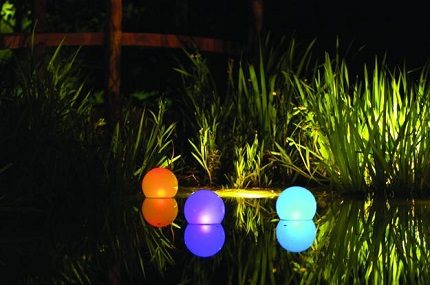
Cottage is a place where people come to relax, enjoy peace, the company of relatives and friends. It should be cozy and beautiful.
In addition, lighting in the country is a definite signal for attackers. It indicates that the house is not abandoned and the owners may be in it.
Street lighting is vital. In any case, it will have to be equipped. The only question is the amount that will have to be invested for its organization and operation.
The most profitable option is the purchase of solar-powered streetlights. They do not increase electricity bills and do not require any special maintenance.
Debunking Myths About Solar-Powered Lanterns
Opponents of solar-powered luminaires for street lighting argue that such devices can not compete with electric lamps. But does it make sense to compare them at all? They were originally designed for different purposes.

Appointment electric lamps - give a bright contrasting light, thanks to which you can consider all the details. And solar-powered lights have a completely different function - to highlight the territory so that you can navigate normally in the evening and at night.
They are not intended to illuminate areas where vigorous activity is planned requiring attention and accuracy.
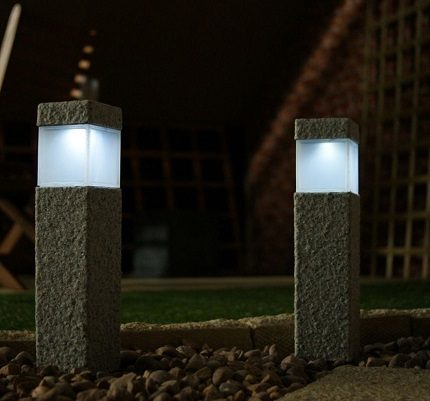
Lights on photocells cannot compete with electric devices in brightness, so it makes sense to organize combined lighting.
For example, an electric lamp is appropriate above the porch of a house. To improve ease of use and energy savings, it can be supplemented motion sensor or photosensitive relay. And paths, lawns, a garden can be illuminated with solar-powered lamps.
When arranging a combined system, you need to remember that electric light blocks the solar lights.
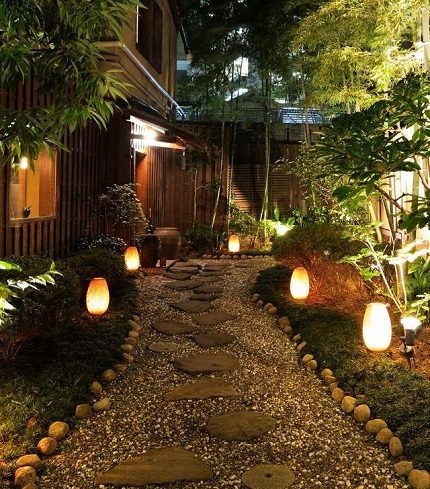
The intensity and duration of stand-alone solar-powered street lamps is largely dependent on the weather.
If it is cloudy during the day, you cannot expect good and long-term illumination in the evening, because It takes 8-10 hours of time and good sunlight to fully charge the battery. This is the main disadvantage of street lamps on photocells.
5 reasons to choose lighting on photocells
Lamps on photocells have several advantages that perfectly compensate for the disadvantages:
- Autonomy. The lights do not need electricity to operate, so there is no need to lay wires and connect devices to the network. This is a significant saving of effort and money.
- Non-volatility. You can install several dozen fixtures, but electricity bills will not increase.
- Full automation. Devices are charged, turned on and off without user intervention.
- Easy to install. The installation of fixtures will require a minimum of time and effort. You do not need to have any special knowledge in order to mount them and ensure normal operation. If desired, the devices are easy to rearrange.
- Unpretentiousness. Lamps are convenient in operation, do not require complicated care and maintenance.
The cost of high-quality electric street lamps and garden lamps powered by solar panels is not particularly different. The difference in costs becomes apparent during operation.
A solar lamp is a one-time investment of money, and the work of even the most economical electrical appliances involves constant energy costs.
Features of the device and the operation of the lamps
There are many varieties of solar-powered lighting, but their design and operating principle of light panels are about the same. Solar energy is stored using special batteries and accumulators.
When energy is supplied to the semiconductor LED, it emits visible light. The LED control system consists of a light sensor and a microcircuit.

The luminous intensity of the lantern depends on the strength of the voltage. When the battery runs down, the control system turns off the lamp. It is turned on with the help of a special photocell, the function of which is to convert solar energy into electrical energy.
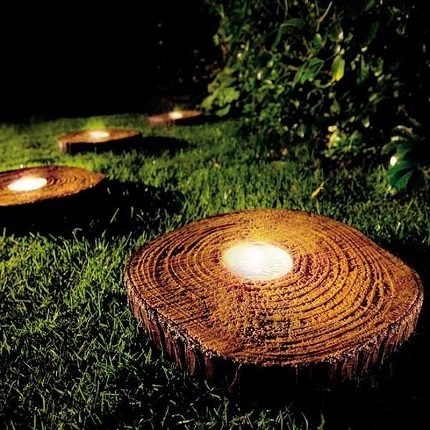
When choosing fixtures, one should take into account not only the technical characteristics of the devices themselves, but also the climatic features of the area. Batteries do not withstand frost, therefore, in regions where severe winters are possible, the lamps are dismantled in late autumn and returned to their place only in spring.
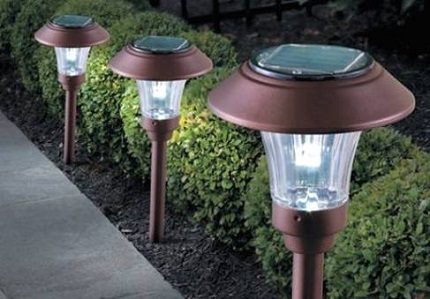
Most models have silicon-based photocells. This is an important nuance, because devices based on single-crystal silicon are more reliable and durable than models with polycrystalline photocells.
Also pay attention to the type and quality of glass. The best choice is flashlights with polycrystalline photocells and tempered glass.
Varieties of street lamp models
The most popular types of lamps on photocells:
- wall mounted;
- park;
- lawn;
- decorative.
Street lamps can be used in any area of the house territory. In fact, the scope of their application is limited only by the owner’s plans regarding the landscape decoration.
The main thing is that the right amount of sunlight falls on the photocells, and any model will be useful and functional.
Stand-alone lights can be placed wherever the owner considers appropriate. If solar rays fall on solar panels 10 hours a day, high-quality and uninterrupted operation of the lamps is ensured.
TOP 7 best photocell lights
There are no miracles, so a solid lamp is unlikely to be bought for a penny. If the plans include normal lighting of the territory, and not just its decoration with original luminous figures, you should pay attention to quality products.

Well proven models:
- Star Alliance YH0607A-PIR. The case of the model is tight, there is a motion sensor, a system for adjusting lighting modes.
- MJJC-SLYF170. The low power model is designed to be installed low above the ground. A good option for highlighting the steps, the bottom of the walls of the house.
- MK02500. The luminaire is designed for wall mounting, the housing is impervious to water droplets and dust.
- ZY-TYN-T10W. The model is expensive, but the costs pay off with interest. The advantages of the luminaire are power, the presence of a motion sensor, reliability and durability.
- RDF YD04. The device has a non-banal design and high quality workmanship, but its scope is limited due to the low brightness of the light.
- Sunlight m3. These are low-power models that place several pieces at once. Advantages - stylish design, relatively low cost.
- Solar lamp. Light intensity depends on the motion sensor. When it fires, the light comes on at full power. A good solution for lighting the front door.
These are not all high-quality street lamps on photocells. There are other models worthy of attention. Additional information on the types and features of the choice of solar lights is presented in this article.
Many users buy quality appliances through the Aliexpress website. When choosing models in online catalogs, you should be careful not to run into low-quality fakes.
Conclusions and useful video on the topic
Autonomous solar-powered lights are still not very common, so there are difficulties with their choice. We offer a selection of videos that will simplify the task.
The device of solar lighting devices:
Scheme of the device and repair of the lamp on photocells:
The best models of fixtures on Aliexpress website:
Video review of the lamp from a real user:
Street lamps on solar cells are well protected from moisture, autonomous, easy to operate and maintain. If necessary, they are easy to remove during lawn mowing or tree pruning. The rest of the time they will delight their owners with soft light and pleasant views.
The approximate service life of such a practical landscape decoration is 5-10 years. This is a good investment in the arrangement of the site.
Have something to supplement, or have questions about the organization of solar street lighting? You can leave comments on the publication, participate in discussions and share your own experience in using such lamps. The contact form is located in the lower block.

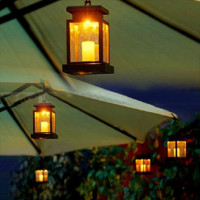 Solar-powered streetlights: views, manufacturers overview and comparison
Solar-powered streetlights: views, manufacturers overview and comparison  Solar lawn lamps: device, how to choose + installation nuances
Solar lawn lamps: device, how to choose + installation nuances 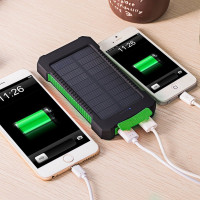 Solar charger: device and principle of operation of charging from the sun
Solar charger: device and principle of operation of charging from the sun 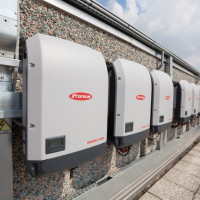 Inverter for solar panels: types of devices, model overview, connection features
Inverter for solar panels: types of devices, model overview, connection features 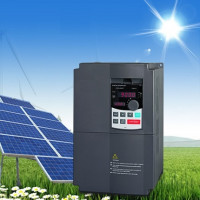 Hybrid inverter for solar panels: types, overview of the best models + connection features
Hybrid inverter for solar panels: types, overview of the best models + connection features 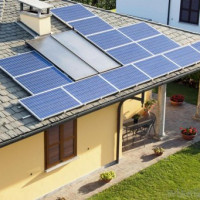 Types of solar panels: a comparative overview of designs and tips for choosing panels
Types of solar panels: a comparative overview of designs and tips for choosing panels  How much does it cost to connect gas to a private house: the price of organizing gas supply
How much does it cost to connect gas to a private house: the price of organizing gas supply  The best washing machines with dryer: model rating and customer tips
The best washing machines with dryer: model rating and customer tips  What is the color temperature of light and the nuances of choosing the temperature of the lamps to suit your needs
What is the color temperature of light and the nuances of choosing the temperature of the lamps to suit your needs  Replacement of a geyser in an apartment: replacement paperwork + basic norms and requirements
Replacement of a geyser in an apartment: replacement paperwork + basic norms and requirements
It’s been a long time since I’m looking at such lamps. I want to try to decorate their plot in the country: to highlight paths, flower beds, etc. But always confuses a few questions:
1. Firstly, are there any options with resistance to low temperatures? For example, I spend a lot of time in the country in the winter, and I want everything to glow all year round. Maybe you can install one battery for them all and put it in a warm garage, and already feed all the lights from it ... Or is the problem not in the battery, but in the panels themselves? Then this is not an option for our latitudes.
2. Secondly, I can’t fully understand if this is relevant at all, if the house is under St. Petersburg and there are a couple of sunny days there during the summer, and even less in the winter ... Do you need direct sunlight to charge?
Direct rays are completely optional. Even on a cloudy day, active radiation is enough to charge the built-in battery.
And I would not recommend such lighting to you in St. Petersburg. They will not be able to charge normally. After a sunny day, they will work for 3-4 hours, after a cloudy 1-2 hours. Think about whether two hours of backlighting in the dark is enough for you?
Well, who said that in St. Petersburg everything is so bad with the weather? And how do people survive there at all? And the network is still foggy Albion - this is England which. It is even worse with fogs and cloudy weather, but you won’t believe it: they also use not only similar lights, but even full-fledged solar panels.
Yes, the performance of the fixtures will not be so high if there is no clear weather, but even on a cloudy day, light penetrates through the clouds and the photocells of the batteries pick it up. Thus, the performance is 30-40% of the maximum. And this means that the lamps will work at night not 1-2 hours, but 2-3 times longer.And no one forbids using ordinary lighting as the main one if the lighting from solar-powered lamps is not enough.
In addition, you can assemble such a lamp yourself. Here's a sketch if anyone is interested.
Indeed, it makes no sense to compare electrical devices and solar devices. In my yard, I put solar-powered lights. It is very economical and easy to install. I tried many different types for the whole time of use and realized that I need to choose flashlights with polycrystalline photocells only, then there will be no problem with their frequent replacement. There are a lot of models, but you should not save on the choice.